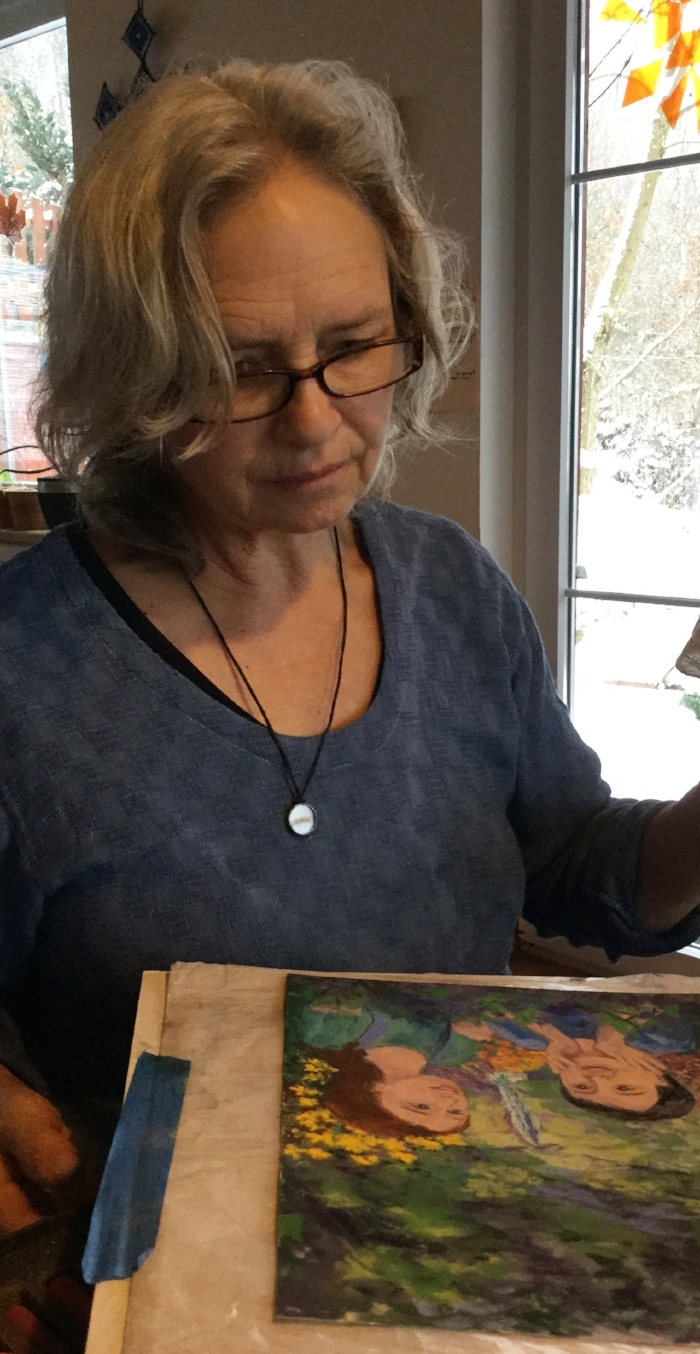Mystery and painting: An interview with Julie Freel, illustrator of the Shanna books
/This week I would like to take a back seat and put the spotlight on Julie Freel, the painter who has made the Children's Wheel of the Year books possible. You can see photographs of many of the illustrations from the Imbolc story titled Shanna and the Raven here.
Children love the direct, emotive paintings that illustrate the scenes of these everyday adventure stories. The paintings bring alive the traditions of the earth-based holidays and without them the stories would be incomplete.
It's time readers got to know the artist behind the illustrations. The best way to do this turned out to be in the form of an interview, so here it goes.
1. Julie, the first Shanna book is largely about intuition. How do you define intuition?
I describe intuition as an internal knowing based on experiences and wisdom that you have gathered. And something beyond that which is unnameable.
2. What do you call the unnameable?
Mystery
3. Is painting an intuitive craft or is it mostly learned skill for you?
It's both.
4. What do you hope to give kids who look at your pictures in the Shanna books?
A sense of connection to the characters and understanding of the story that leads them to a deeper connection with themselves, the earth and mystery.
5. What is the best part of painting illustrations?
The only illustrations I feel inspired to paint are those which have meaning and depth for me. There is a magic in painting that occurs when these marks on a page suddenly pop into the experience you're trying to illustrate.
6. What is the hardest part?
My technical deficits, reworking illustrations when the picture gets muddy instead of clear, leaping internal hurdles like self doubt and time management, so I sit down and do it.
7. What feeling do you have when you are in the midst of it?
When it’s going well, it’s like being in love. When it’s not, I feel frustrated and hopeless. Best is when I get lost in painting, then it’s calm and meditative.
8. Is there anything interesting you can tell kids about the process of making illustrations?
Illustrating a story you want to tell is most fun if you do it in your own way, without thinking about whether anyone else will like it or trying to do something that's really not you. In terms of working with someone else to illustrate a book, it helps me that my writer sketches her vision for scenes.
9. What was the most important part of learning to paint for you?
Drawing was something I could do well enough to gain attention and validation. The first thing I remember that inspired me to paint was Van Gogh. His bold colors and brush strokes called me to express my own emotions through color and form.
10. What is the difference between painting a stand-alone painting and illustrating a book?
The book provides structure and motivation to paint more often. It's nice to do both. Even stand alone paintings have to be something that really motivate and touch me in order to inspire me to paint.
11. Where did you learn painting and drawing?
From watching other children draw as a child, from high school art teachers, college classes, occasional classes and workshops.
12. How do you keep learning?
By painting with artist friends.
13. Where are you from?
As I child I grew up in Southwest Michigan and spent my adult life in rural Eastern Oregon, traveling often to the Czech Republic to see family.
14. Where do you live now?
In northeastern Oregon.
15. What animals do you live with?
Toby, my cat and Sami, my dog and various grandchildren.
16. What is something surprising about you?
I am a child and family counselor and my work with disadvantaged children inspired me to write and illustrate the first (and perhaps only) therapeutic story for Romany children living in Czech orphanages.
Thank you, Julie. If readers have further questions, you can post them in the comments and I'll do another interview post. You can find the Imbolc story Shanna and the Raven, Julie's first book illustrated with oil pastels here.














